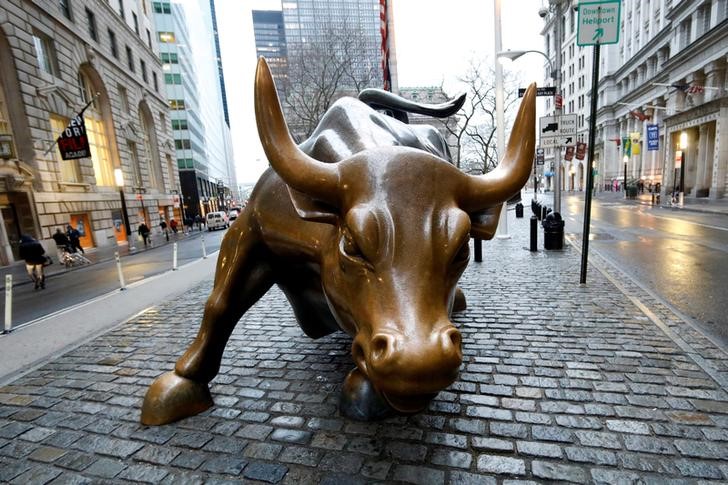This post was originally published on this site
https://i-invdn-com.akamaized.net/news/bull_b_5._M_1440048196.jpg
Investing.com — Fund managers’ letters to investors can be tedious affairs, but sometimes there comes one so brilliant that all you can do is to reproduce it as exactly as possible.
The latest from GMO founder Jeremy Grantham is one such example. You can find the full version here, but for those who don’t have the time to read it, the main points are as follows
The long bull market since 2009 has matured into a “fully-fledged epic bubble”, and is generating almost all of the most reliable signs that this bubble is in its late stage.
These signs include behavior, especially by small investors, that Grantham characterizes as “crazy”. He notes that 150 micro caps have tripled over the last year, “which is over three times as many as any year in the previous decade.” Additionally, he notes, “the volume of small retail purchases, of less than 10 contracts, of call options on U.S. equities has increased 8-fold compared to 2019, and 2019 was already well above long-run average.”
There have been increasingly frequent signs of mania with regard to single stocks: he highlights Hertz (OTC:HTZGQ), Kodak (NYSE:KODK), Nikola (NASDAQ:NKLA) “and, especially, Tesla (NASDAQ:TSLA),” whose valuation now equates to $1.25 million per car sold each year, compared to $9,000 for General Motors (NYSE:GM).
“What has 1929 got to equal that?” Grantham asks.
The other tell-tale sign of a late-stage bubble all the way back to the 18th century, is the acceleration of gains. In recent times, he notes, that has been around 60% in the final 21 months before the peak. In the current rally, the major indices have done all of that and more in just nine months.
Sadly, there is just no way of timing the top. Bubbles typically don’t burst in response to single negative events. A veteran of over four decades, Grantham freely admits getting out of the Japanese stock bubble almost three years too early in the 1980s.
“The great bull markets typically turn down when the market conditions are very favorable, just subtly less favorable than they were yesterday,” he argues. “And that is why they are always missed.”
However, he points to one telling, if anecdotal factor, common to bubbles, namely the “intensity and enthusiasm of bulls” and the “rising hostility toward bears.” He cites 1999, when his clients acted “as if we were deliberately and maliciously depriving them of gains”.
The above factors make it impossible for most sell-side analysts to go against the consensus. Here, we just have to quote Grantham at length.
So what is to be done? If you can’t time the end of the bubble, then at least concentrate exposure where things are relatively cheap, Grantham argues. Value stocks have had their worst-ever relative decade ending December 2019, followed by the worst-ever year in 2020. Likewise, emerging market stocks are at one of their three “more or less co-equal relative lows” against U.S. equities over the last 50 years.
“We believe it is in the overlap of these two ideas, Value and Emerging, that your relative bets should go, along with the greatest avoidance of U.S. growth stocks that your career and business risk will allow.”


